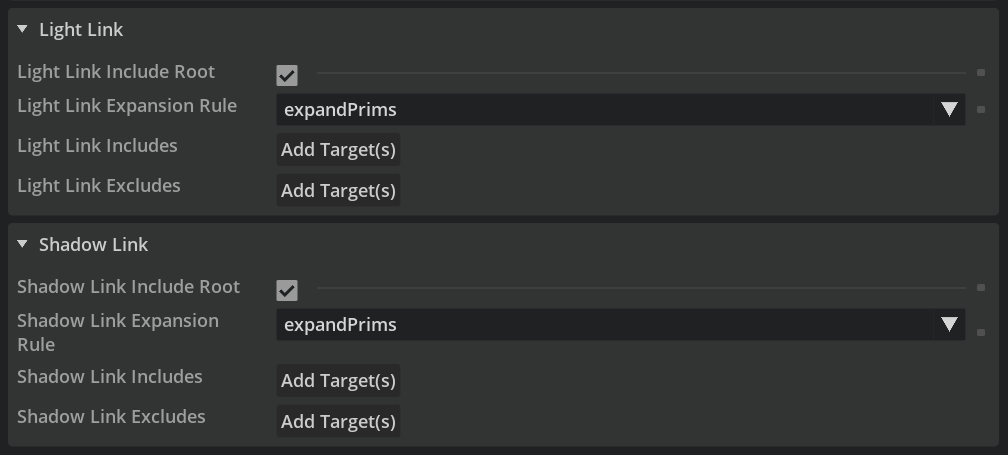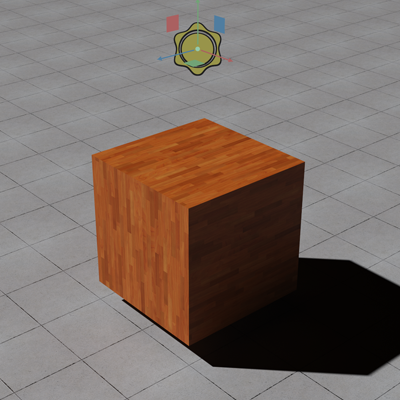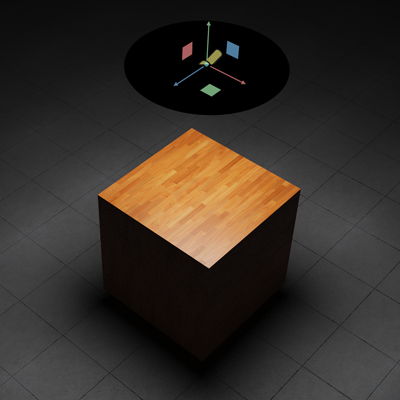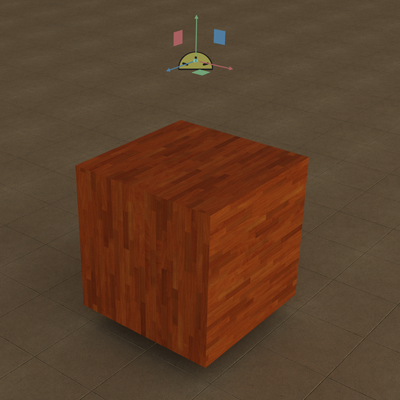Lights
Lighting Overview
Lighting in Omniverse Kit based apps offers a wide variety of lighting options and capabilities. Here is a quick look at how you can expect to interact with and manage lighting.
Light Sources
Light sources in Kit based apps are made to realistically emulate real-world lights.
Light Types |
Real World Equivalent
|
|---|---|
Distant Light |
Direct Sun/Moon light
|
Sphere Light |
Light Bulb
|
Rect Light |
Rectangular Panel Light
|
Disc Light |
Circular Panel Lights and Spotlights
|
Cylinder Light |
Neon/Fluorescent Light Tubes
|
Dome Light |
HDRI Skysphere (Background) lighting
|
Distant Light
Distant lights are parallel rays of light useful for showering an entire scene in a directional light. Meant to emulate lights infinitely far away, shadows cast with type of light will be hard edged and rather harsh compared to other lights. Ideal for Sun/Moon light, distant lights are generally a critical element to any outdoor scene.
Sphere Light
Sphere lights emit light in all directions from a central ball (not a point). The softness of the shadows (and overall intensity) are dictated by the radius of the central ball. Sphere lights are effective replacements for light bulbs.
Light Specific Properties |
Usage
|
|---|---|
Radius |
Source Sphere Radius
|
Treat as Point |
Makes the sphere size infinitely small
|
Rectangular (Rect) Light
Rectangular lights are capable of emulating light generated from a panel. The rectangle can be adjusted in width and length to accommodate any ratio from thin rectangle to square shape. This affect overall light power and shadow softness.
Light Specific Properties |
Usage
|
|---|---|
Height |
Depth of the light source (x value)
|
Length |
Length of the source (y value)
|
Note
The Texture File functionality is not supported in RTX Real time rendering mode. This will be fixed in a future update.
Disc Light
Similar to the rect light the Disc light emulates panel lighting but in the shape of a circle. Size is controlled by radius which affects overall light power as well as shadow softness. If shaping is used, the light acts as a traditional spotlight and has specialized controls to adjust the shape and color of the lights falloff.
Light Specific Properties |
Usage
|
|---|---|
Radius |
Source Disc Radius
|
Cone Angle |
Controls Projection Angle of the light. Higher is wider, lower is narrower.
|
Cone softness |
Increased the value to “soften” the lights cone edges.
|
Focus |
Higher Values soften and blends with Focus Tint
|
Focus Tint |
Tints the edges of the light falloff based on Focus
|
Note
Increasing Shadow samples per pixels in Rendering Settings smooths light falloff at the cost of render speed.
Cylinder Light
Tubular lighting useful in emulating neon/fluorescent light tubes and other linear omnidirectional lighting.
Light Specific Properties |
Usage
|
|---|---|
Radius |
Source Tube Radius
|
Length |
Source Tube Length
|
Dome Light
Used for image-based (background) lighting when supplied with a texture. Dome lights allow you to easily light your entire scene with a high or low dynamic range image.
Light Specific Properties |
Usage
|
|---|---|
Texture:File |
Low/High Dynamic Range image input
|
Texture:Format |
Selects Skydome Format
Choices include: LatLong, Angular, Mirrored Ball and Vertical Cross
HDR Formats: HDR, Exporter
LDR Formats: PNG
|
Common Light Properties
Common Light Properties |
Usage
|
|---|---|
Color |
The color of the light
|
Color Temperature |
The color of the light using the Kelvin Scale.
|
Diffuse Multiplier |
Adjusts the Diffuse Power of the light.
|
Enable Color Temp |
True uses Color Temperature for input, False uses Color.
|
Exposure |
Exposure offers a quick way to increase/decrease light intensity in stops.
|
Intensity |
Base luminosity of the light source.
|
Normalize Power |
Brings light power into a normalized range.
|
Specular Multiplier |
Adjusts the amount specularity the light contributes to.
|
Light Linking
In Omniverse, Lights can be linked to surfaces allowing individualized response to specified lights.
Note
Light Linking is a specific utility of Path Tracing and only works in PT Mode.
Light linking can be used when very specific control over scene lighting is needed by specifying which lights contribute illumination or shadows to an object.
Property Panel Settings
Under the Light Link and Shadow Link menus for a light, primitives can be included or excluded. The underlying mechanism for these lists are USD collections. The expansion rules control how primitives are included or excluded from these collections. explicitOnly links to one specific primitive, expandPrims includes the children of the specified primitive, and expandPrimsAndProperties includes children and attributes, though attributes are not currently supported in the light linking paradigm. The exclude collation can act as a subtraction boolean against the include list. If the expansion rule is set to expandPrims and the top of a hierarchy is selected as s single selection, then the exclude list can be used to remove lower level objects from the include list.

Light Link
Option |
Result |
|---|---|
Light Link Include Root |
On by default, this includes all objects under the root primitive |
Light Link Expansion Rule |
explicitOnly, expandPrims, expandPrimsAndProperties |
Light Link Includes |
Add Target will bring up a menu to select objects to link to the light |
Light Link Excludes |
Add Target will bring up a menu to select objects to exclude from the light |
Shadow Link
Option |
Result |
|---|---|
Shadow Link Include Root |
On by default, this includes all objects under the root primitive |
Shadow Link Expansion Rule |
explicitOnly, expandPrims, expandPrimsAndProperties |
Shadow Link Includes |
Add Target will bring up a menu to select objects to link to the light’s shadow |
Shadow Link Excludes |
Add Target will bring up a menu to select objects to exclude from the light’s shadow |





